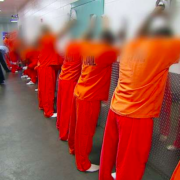Thinking about the ten year anniversary of THE GLOBALIZATION OF SUPERMAX PRISONS
A decade has passed since the publication of my edited book, The Globalization of Supermax Prisons.
This collection of thirteen chapters, four of which I sole-authored, and another I co-authored, was published in 2013 by Rutgers University Press.
The Globalization of Supermax Prisons included a foreword by Loïc Wacquant, a highly regarded and respected Sociologist, along with insightful contributions from eleven other prominent academics. Together these researchers assembled and reviewed existing scholarship at the time on the emergence, growth, complexity, and proliferation of supermax prisons, a relatively new form of incarceration – an institution where inmates are typically locked up for a minimum of 23 hours a day, and afforded minimal rights and privileges, that frequently results in a deteriorating effect on prisoners’ mental and physical well-being.
The content of the book sits at the intersections of scholarship not only on corrections and criminal justice, but crimes of the powerful, and focused on the numerous factors that contribute to the growth and spread of supermax prisons, including political ideologies, economic incentives, and the securitization of penal policies.
With the exception of the introduction and conclusion, each chapter examined the experience of supermax prisons in countries where supermax prisons have proliferated, including not just the United States, but Australia, Brazil, Britain, Canada, Mexico, New Zealand, the Netherlands, and South Africa.
These chapters also highlighted the unique ways in which supermaxes have been implemented and integrated within their respective criminal justice systems, emphasizing that supermax prisons are not just an American export, but a global phenomenon with distinctive local characteristics and implications.
The Globalization of Supermax Prisons, demonstrated how this process is part of a larger trend influenced by neoliberal policies and free market ideology, which have contributed to the growth of the prison-industrial complex and the expansion of supermax institutions worldwide.
The chapters and the book itself also examine numerous connections within the relationships among globalization, capitalism, and the prison industry.
It’s important to note that many states and countries may not have a standalone supermax prisons, but rather a tier, wing, or annex where convicts who would normally be sent to a supermax facility are detained.
Thus, it is crucial to consider these variations in facility designations and terminology when researching these types of institutions globally.
By exploring the ethical implications of supermax prisons, the book challenged readers to critically evaluate the trade-off between public safety and individual-human rights.
The Globalization of Supermax Prisons received the 2013 “Choice Outstanding Academic Title” award and garnered nine mostly highly positive reviews in scholarly journals ranging from the Corrections Compendium to the Law and Politics Book Review. Reviewers were emphasized how the book was an important contribution to the discussion of the field of corrections.
In addition to its positive reception, the book made significant contributions to our understanding of the dissemination of American-style criminal justice initiatives, policies, and practices. It shed light on the persisting existence of supermax prisons and solitary confinement in many so-called civilized countries and underscored the need for empirical examination of whether these institutions and practices have increased over time.
Moreover, in the context of the ongoing rise in the global prison population, the book highlighted the lack of thoughtful mechanisms in place by most governments to deal with the incarceration of the most dangerous individuals in their correctional facilities. The books’ critical examination of the ethical implications of the prison-industrial complex and the pervasive influence of neoliberalism served as a valuable resource for readers grappling with the complex issues surrounding mass incarceration.
As we continue to navigate the challenges presented by supermax prisons, The Globalization of Supermax Prisons should serve as a compass guiding us toward the development of more just and humane prison and criminal justice systems.












